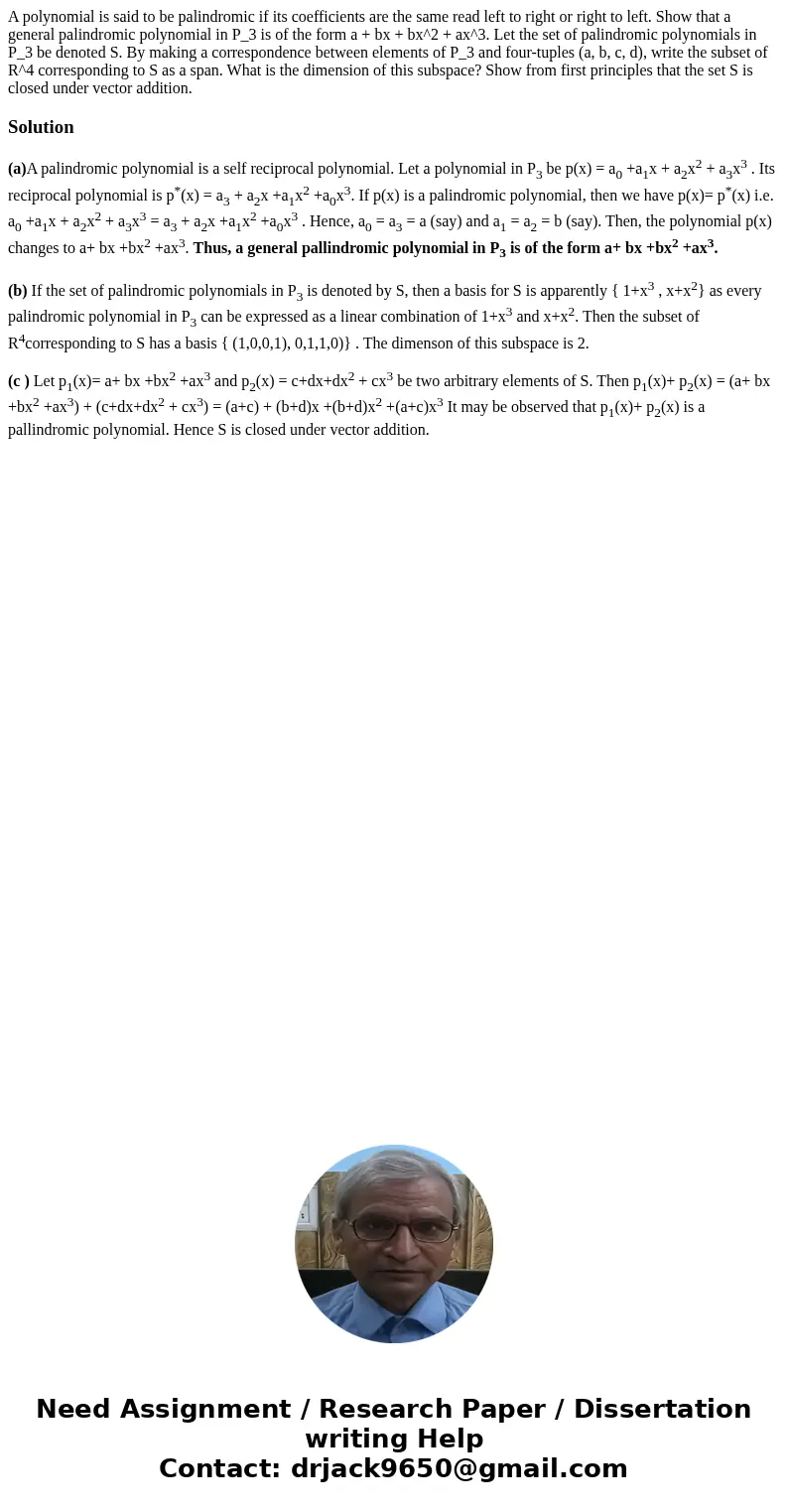A polynomial is said to be palindromic if its coefficients a
Solution
(a)A palindromic polynomial is a self reciprocal polynomial. Let a polynomial in P3 be p(x) = a0 +a1x + a2x2 + a3x3 . Its reciprocal polynomial is p*(x) = a3 + a2x +a1x2 +a0x3. If p(x) is a palindromic polynomial, then we have p(x)= p*(x) i.e. a0 +a1x + a2x2 + a3x3 = a3 + a2x +a1x2 +a0x3 . Hence, a0 = a3 = a (say) and a1 = a2 = b (say). Then, the polynomial p(x) changes to a+ bx +bx2 +ax3. Thus, a general pallindromic polynomial in P3 is of the form a+ bx +bx2 +ax3.
(b) If the set of palindromic polynomials in P3 is denoted by S, then a basis for S is apparently { 1+x3 , x+x2} as every palindromic polynomial in P3 can be expressed as a linear combination of 1+x3 and x+x2. Then the subset of R4corresponding to S has a basis { (1,0,0,1), 0,1,1,0)} . The dimenson of this subspace is 2.
(c ) Let p1(x)= a+ bx +bx2 +ax3 and p2(x) = c+dx+dx2 + cx3 be two arbitrary elements of S. Then p1(x)+ p2(x) = (a+ bx +bx2 +ax3) + (c+dx+dx2 + cx3) = (a+c) + (b+d)x +(b+d)x2 +(a+c)x3 It may be observed that p1(x)+ p2(x) is a pallindromic polynomial. Hence S is closed under vector addition.

 Homework Sourse
Homework Sourse